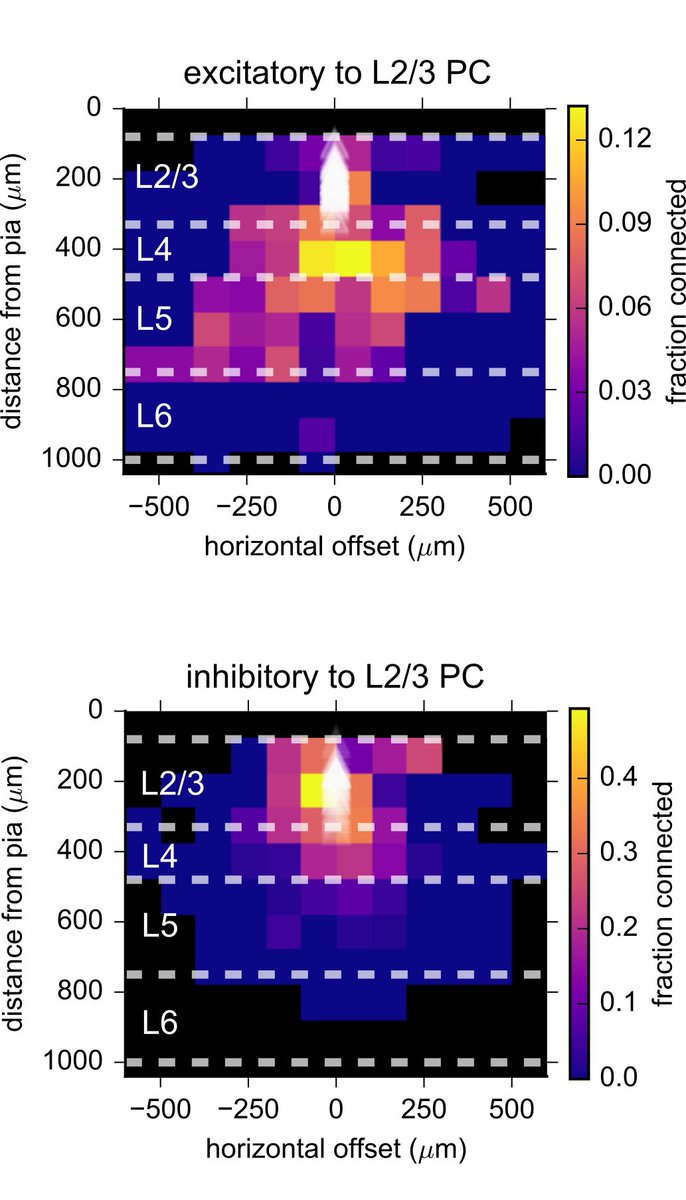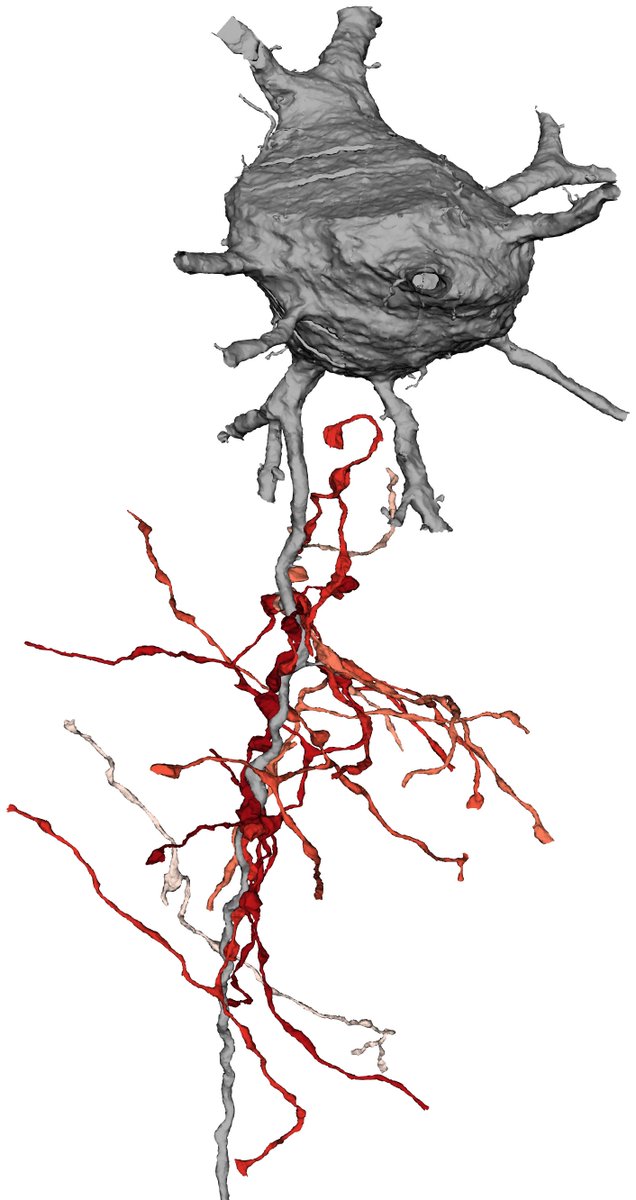
Brain mapping requires thorough synaptic measurements with diverse subclasses of neurons. Check out our latest #neuroscience publication: “Synaptic connectivity to L2/3 of primary visual cortex measured by two-photon #optogenetic stimulation”
📄 elifesciences.org/articles/71103 🧵 1
📄 elifesciences.org/articles/71103 🧵 1
Our team [including @trav_ha, @timjarsky, @HongkuiZeng & @lukecampagnola] + @bakermind combined optogenetic stimulation with simultaneous multicellular recording to measure synaptic connections within cortical microcircuits. #optogenetics🧵 2 

The reliability of multiphoton optogenetic stimulation was measured across Cre lines & connectivity measurements were verified by #patchclamp recordings 🧵 3 

Connections to L2/3 pyramidal neurons were deeply characterized (>10,000 possible connections tested). Consistent with the canonical cortical microcircuit, excitatory connections were most frequently observed from layer 4 while inhibitory connections were abundant within L2/3 🧵4 

Interestingly, experiments also revealed strong excitatory connections from layer 5 intratelencephalic neurons and potent translaminar inhibition from multiple interneuron subclasses. 🧵 5 

Additional features of synaptic connections including strength, dynamics, patterns of convergence and divergence were measured and compared across presynaptic and postsynaptic cell subclasses. 🧵 6 

The combination of photostimulation and multicellular recording revealed converging inputs to, and diverging outputs from, single cells across hundreds of microns. Outputs from a single cell onto connected partners could differ in strength by a factor of 10 or more. 🧵 7 

Data and analyses have been shared at github.com/travis-open/tw… and doi.org/10.5061/dryad.… #openscience🧵 8
• • •
Missing some Tweet in this thread? You can try to
force a refresh





